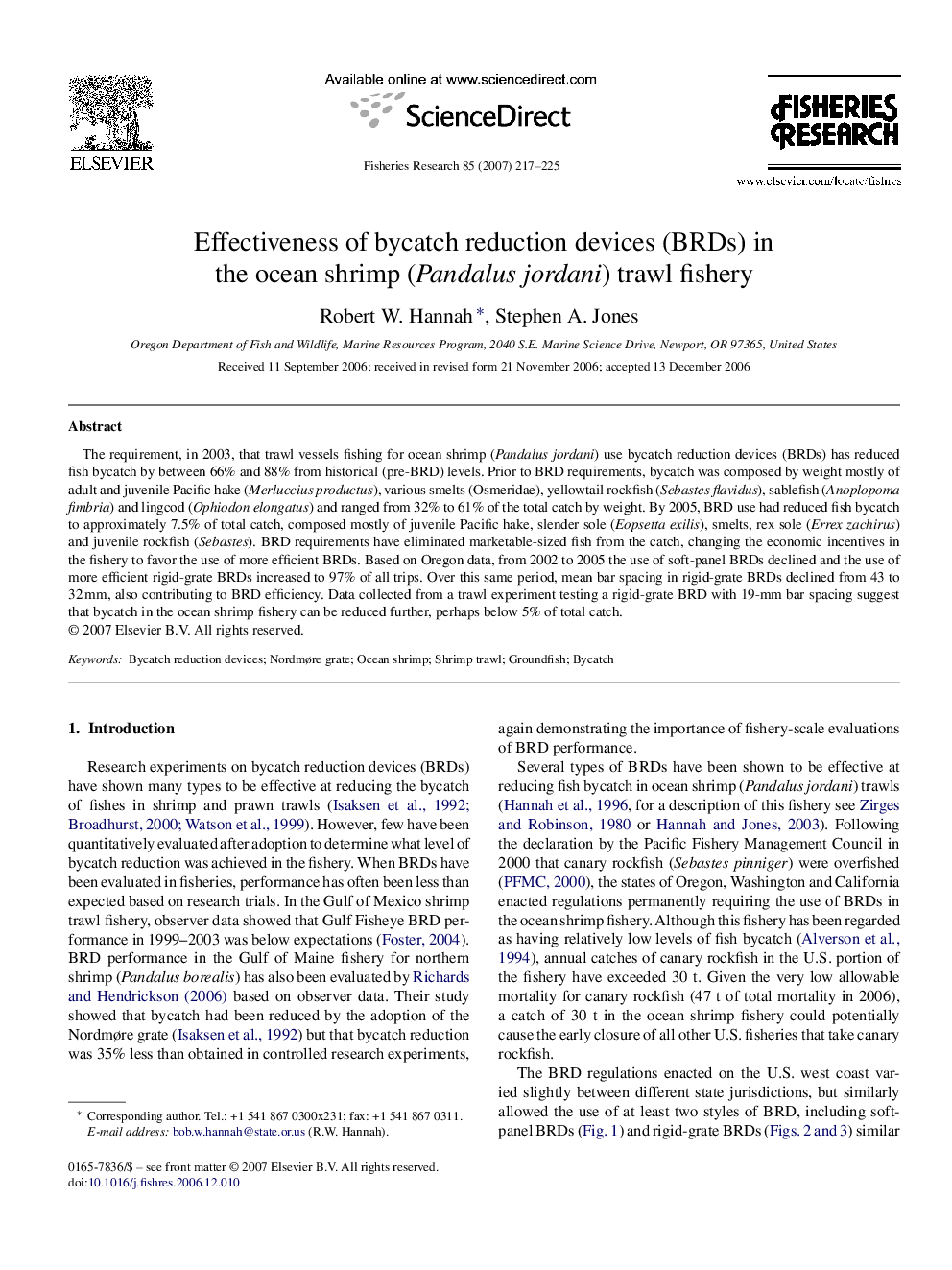| کد مقاله | کد نشریه | سال انتشار | مقاله انگلیسی | نسخه تمام متن |
|---|---|---|---|---|
| 4544772 | 1626865 | 2007 | 9 صفحه PDF | دانلود رایگان |

The requirement, in 2003, that trawl vessels fishing for ocean shrimp (Pandalus jordani) use bycatch reduction devices (BRDs) has reduced fish bycatch by between 66% and 88% from historical (pre-BRD) levels. Prior to BRD requirements, bycatch was composed by weight mostly of adult and juvenile Pacific hake (Merluccius productus), various smelts (Osmeridae), yellowtail rockfish (Sebastes flavidus), sablefish (Anoplopoma fimbria) and lingcod (Ophiodon elongatus) and ranged from 32% to 61% of the total catch by weight. By 2005, BRD use had reduced fish bycatch to approximately 7.5% of total catch, composed mostly of juvenile Pacific hake, slender sole (Eopsetta exilis), smelts, rex sole (Errex zachirus) and juvenile rockfish (Sebastes). BRD requirements have eliminated marketable-sized fish from the catch, changing the economic incentives in the fishery to favor the use of more efficient BRDs. Based on Oregon data, from 2002 to 2005 the use of soft-panel BRDs declined and the use of more efficient rigid-grate BRDs increased to 97% of all trips. Over this same period, mean bar spacing in rigid-grate BRDs declined from 43 to 32 mm, also contributing to BRD efficiency. Data collected from a trawl experiment testing a rigid-grate BRD with 19-mm bar spacing suggest that bycatch in the ocean shrimp fishery can be reduced further, perhaps below 5% of total catch.
Journal: Fisheries Research - Volume 85, Issues 1–2, June 2007, Pages 217–225